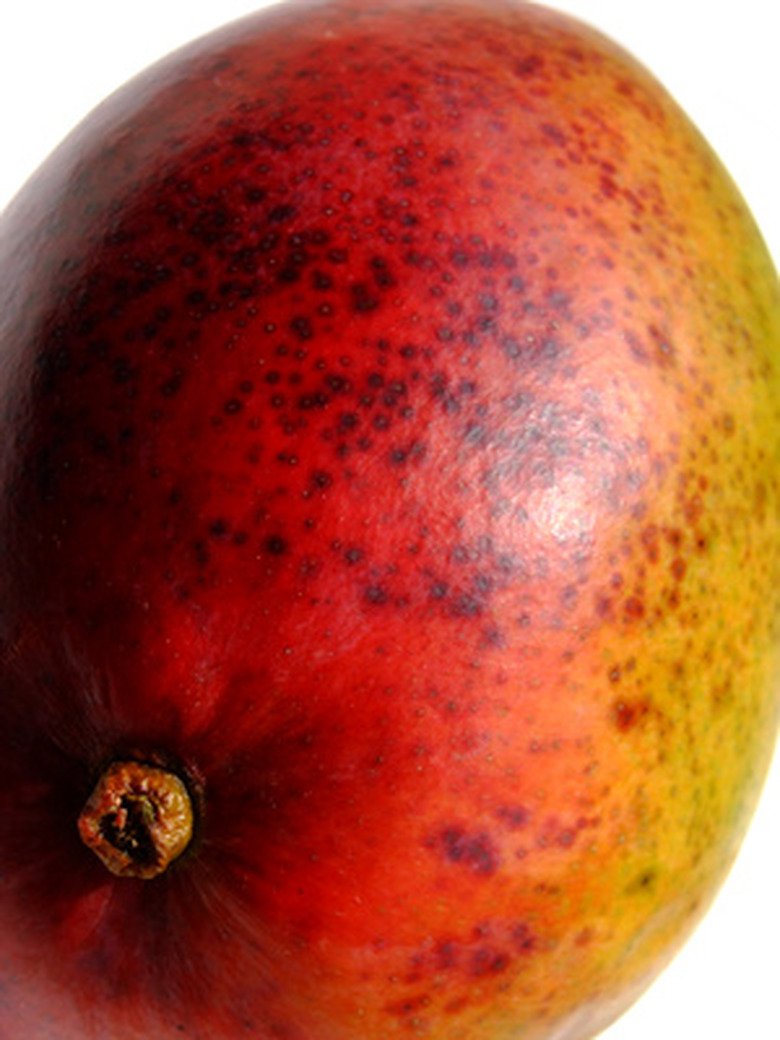How To Grow Mango Trees In Texas
Things Needed
- Shovel
- Measuring cups
- Ammonium sulfate
- Mulch
- Blanket
Mango trees (Mangifera indica L.), native to Asia, can grow to 30 feet in height with an equal spread. Those grown in Texas, because of winter freezes, generally do not reach their maximum size. If you live in an area of Texas that receives frost in the winter, agriculturists with Texas A&M University suggest that you grow the mango tree on the east or south side of the house. Planting on an elevated site will help as well, as colder air is drawn to lower elevations within the landscape. Mango varieties that do well in Texas include 'Julie,' 'Manila' and 'Irwin.'
Step 1
Choose a sunny location in the garden for the mango tree. Lay the nursery pot on its side and slide the mango tree from the pot. Use the hose to gently wash the soil from the root ball.
- Mango trees (Mangifera indica L.), native to Asia, can grow to 30 feet in height with an equal spread.
- If you live in an area of Texas that receives frost in the winter, agriculturists with Texas A&M University suggest that you grow the mango tree on the east or south side of the house.
Step 2
Dig a hole that is the same depth and twice the width of the nursery pot. Place the mango tree's root ball into the hole and fill with soil. Press lightly on the soil around the base of the tree with your feet to remove any air pockets trapped in the soil.
Step 3
Build a watering ring around the mango tree. Bring soil from another part of the garden, moisten it and form it into a ring that is 5 inches thick and 5 inches high. Place the ring in a 1-foot radius around the tree.
Step 4
Fill the watering ring twice during the first week after planting the mango tree, then once a week for the next three weeks. For the remainder of the tree's first year in the ground, fill the watering ring once every two weeks. Mature mango trees should be watered every three weeks. Do not water at all for the two months before the tree blooms. When it flowers, water deeply and resume the normal watering schedule.
- Dig a hole that is the same depth and twice the width of the nursery pot.
- Bring soil from another part of the garden, moisten it and form it into a ring that is 5 inches thick and 5 inches high.
Step 5
Fertilize the mango tree monthly with 1/2 cup ammonium sulfate during the tree's first year. During the mango tree's second year in the Texas landscape, give it 1 cup of ammonium sulfate per month, increasing the amount to 2 cups when the tree reaches three years of age. Spread the fertilizer on the soil under the tree and out to the drip line. Run a rake over the area and then water the top 6 inches of soil to activate the fertilizer. Begin fertilizing when the tree shows signs of new growth and discontinue in October.
Step 6
Maintain a weed-free zone within a 1-foot radius of the mango tree. Hand pull weeds as they appear.
- Fertilize the mango tree monthly with 1/2 cup ammonium sulfate during the tree's first year.
Step 7
Pour 3 inches of organic mulch into the watering ring around the mango tree. Keep it 2 inches from the trunk. Mulch will help protect the roots from drying in the Texas summer heat.
Step 8
Protect the mango tree from Texas winter frost by packing soil around the base and 1 foot up the trunk of the tree in December. Remove the soil in the spring. If the tree is small enough, cover it with a blanket or tarp.
Step 9
Check the mango tree periodically for common Texas garden pests such as mites and scale. Contact your county AgriLife extension for information on suitable pesticides for your Texas region.
- Pour 3 inches of organic mulch into the watering ring around the mango tree.
- Protect the mango tree from Texas winter frost by packing soil around the base and 1 foot up the trunk of the tree in December.
